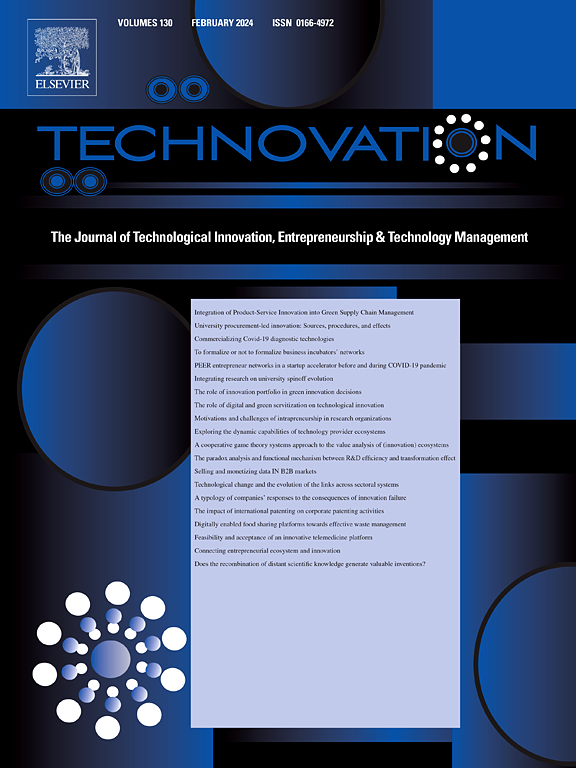数字化转型如何以及何时促进技术创新绩效?对中国高科技企业的研究
IF 10.9
1区 管理学
Q1 ENGINEERING, INDUSTRIAL
引用次数: 0
摘要
数字化转型和技术创新是企业对外部竞争动态的重要回应;然而,它们之间的复杂关系仍未得到充分探讨,且存在争议。根据动态能力观点,我们假设数字化转型通过缓解内部信息不对称和改变组织资源分配来影响技术创新,从而解决转型过程中的常规和资源僵化问题。为了进一步探讨数字化转型对技术创新的潜在挤出效应,我们设计了一套基于企业可获得资源的环境条件的异质性分析。本文基于2010-2021年中国19个高科技产业的综合面板数据集,利用双固定效应和中介模型检验了这些关系。研究结果表明,数字化转型促进了技术创新的数量、质量和效率,其中对技术创新的数量、质量和效率的影响相对更大。这些效应受内部信息不对称和研发强度的调节。此外,在中国东部地区的企业和那些盈利的企业中,数字化转型的积极和显著影响是明显的,但在亏损的企业中,数字化转型的积极和显著影响可以忽略不计。我们进行了一系列稳健性检验来验证结果,并讨论了其理论和实践意义。本文章由计算机程序翻译,如有差异,请以英文原文为准。
How and when does digital transformation promote technological innovation performance? A study of Chinese high-tech firms
Digital transformation and technological innovations are crucial responses of firms to external competitive dynamics; however, the complex relationship between them remains underexplored and contentious. Drawing on the dynamic capability view, we postulate that digital transformation influences technological innovations by alleviating internal information asymmetry and altering organizational resource distribution, thereby addressing routine and resource rigidities in the transformation process. To further explore the potential crowding-out effect of digital transformation on technological innovation, we designed a set of heterogeneity analyses based on contextual conditions surrounding resources accessible to firms. We examined these relationships using double fixed-effects and mediation models, based on a comprehensive panel dataset of 19 high-tech industries in China, spanning the years 2010–2021. Our results indicate that digital transformation promotes the quantity, quality, and efficiency of technological innovations, with a comparatively greater influence on the former two. These effects are mediated by internal information asymmetry and R&D intensity. Furthermore, the positive and significant effect of digital transformation is evident among firms located in the Eastern region of China and those that are profitable, but becomes negligible among loss-making firms. We conducted a series of robustness checks to validate the results and discussed their theoretical and practical implications.
求助全文
通过发布文献求助,成功后即可免费获取论文全文。
去求助
来源期刊

Technovation
管理科学-工程:工业
CiteScore
15.10
自引率
11.20%
发文量
208
审稿时长
91 days
期刊介绍:
The interdisciplinary journal Technovation covers various aspects of technological innovation, exploring processes, products, and social impacts. It examines innovation in both process and product realms, including social innovations like regulatory frameworks and non-economic benefits. Topics range from emerging trends and capital for development to managing technology-intensive ventures and innovation in organizations of different sizes. It also discusses organizational structures, investment strategies for science and technology enterprises, and the roles of technological innovators. Additionally, it addresses technology transfer between developing countries and innovation across enterprise, political, and economic systems.
 求助内容:
求助内容: 应助结果提醒方式:
应助结果提醒方式:


